Abstract
The minimal inhibitory concentrations of 32 antimicrobial agents were established for 73 strains of Propionibacterium acnes and four related species (P. granulosum, P. avidum, Corynebacterium minutissimum, and C. parvum). Most strains showed good susceptibility to those agents usually considered active against gram-positive organisms. With the exception of C. minutissimum, the strains tested revealed more or less identical susceptibility ranges. The lowest minimal inhibitory concentrations were observed with benzylpenicillin, ampicillin, cephalothin, rifampin, erythromycin, clindamycin, and minocycline. C. minutissimum was more susceptible to gentamicin, sisomicin, tobramycin, and fusidic acid but more resistant to most other drugs than were the other species examined.
Full text
PDF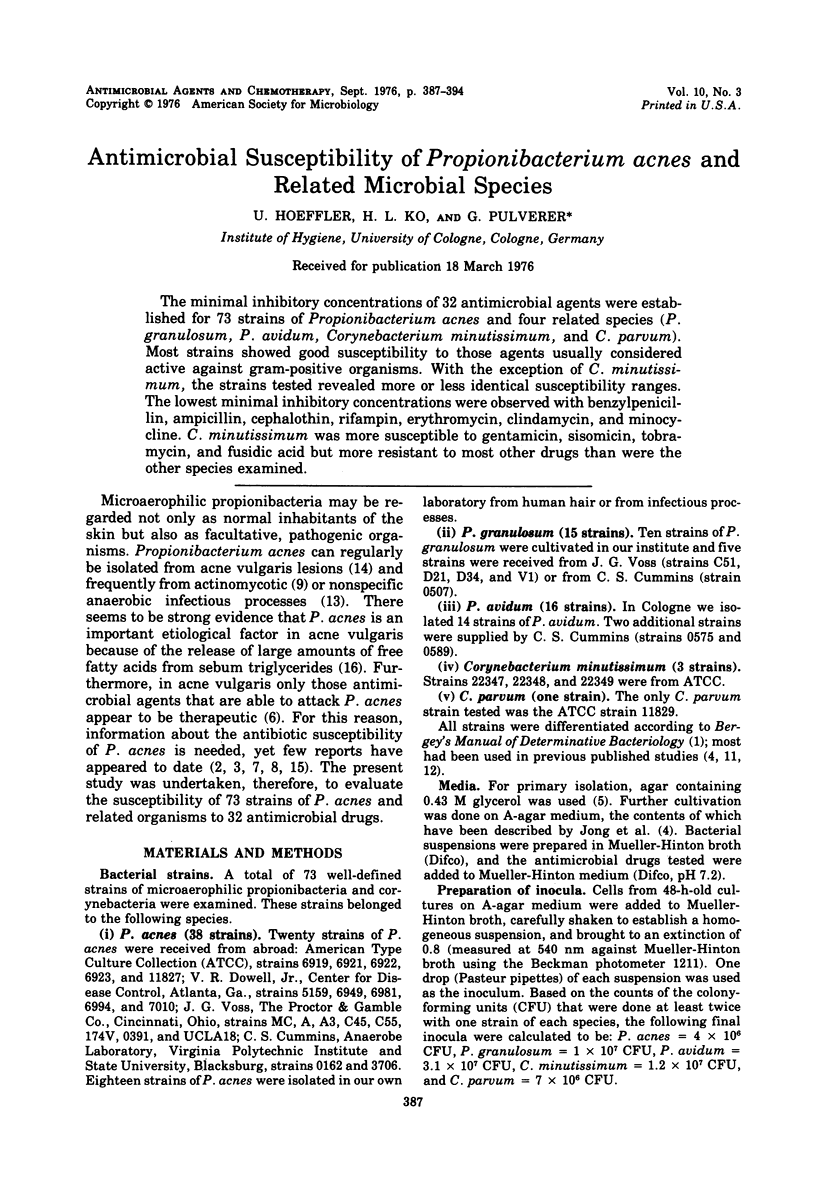
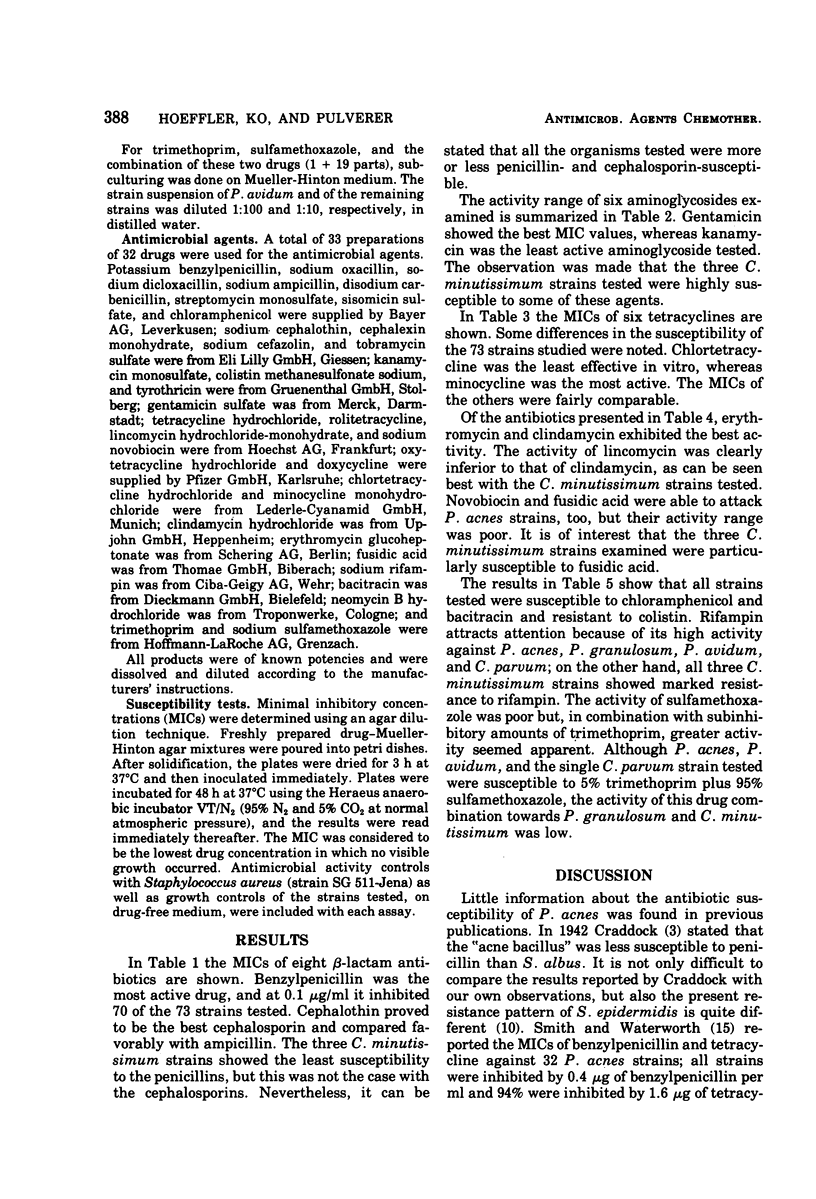
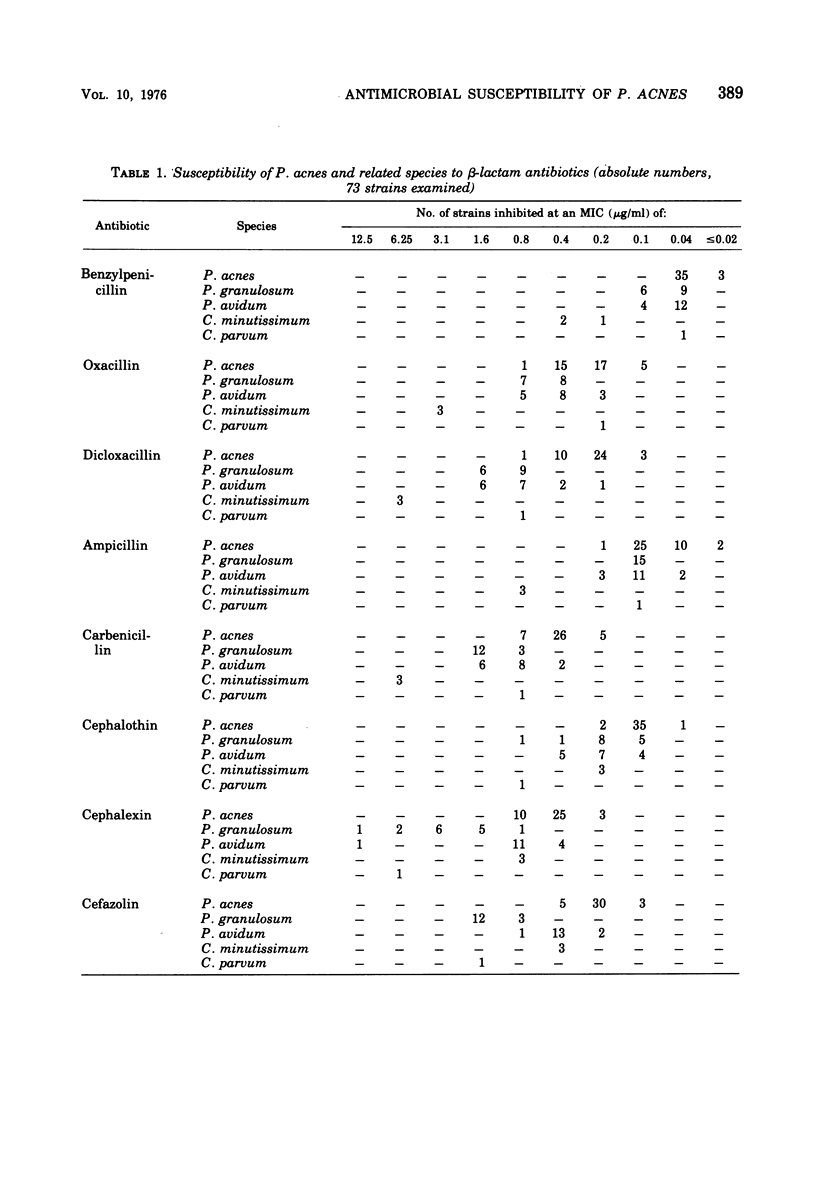
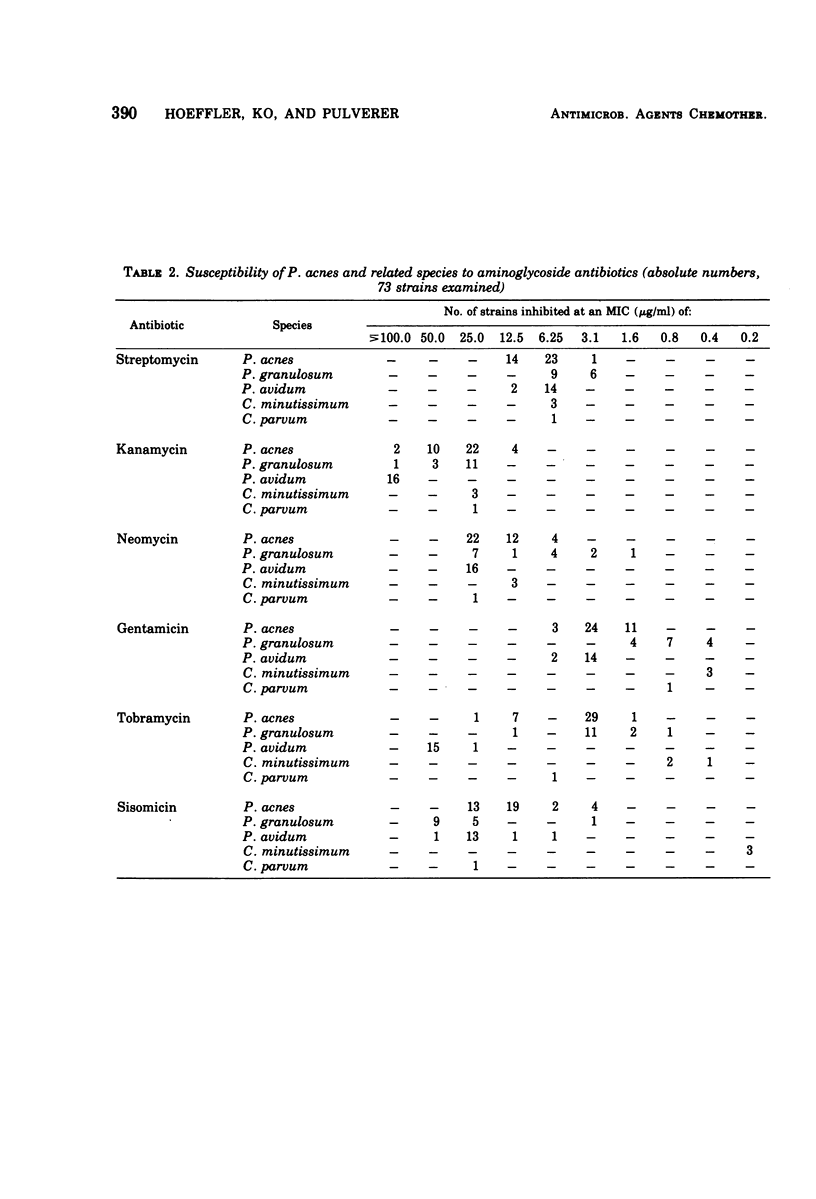
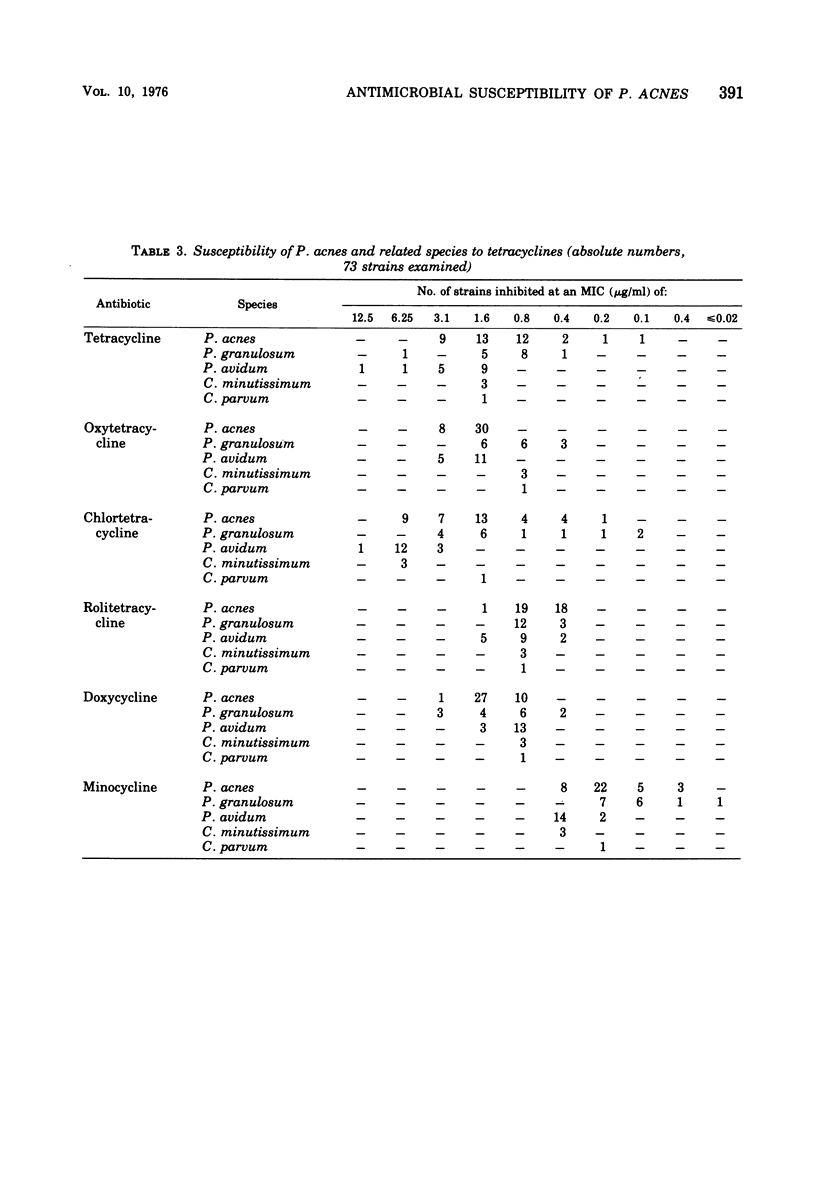
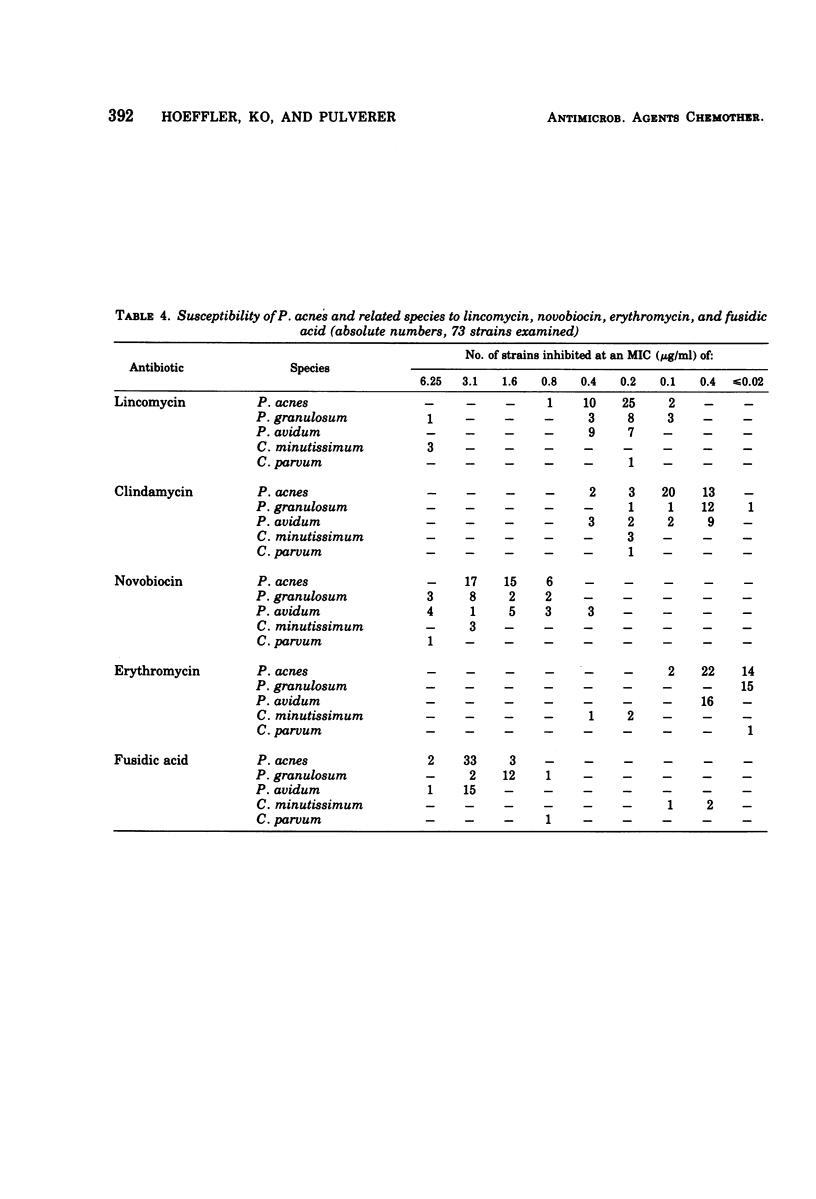
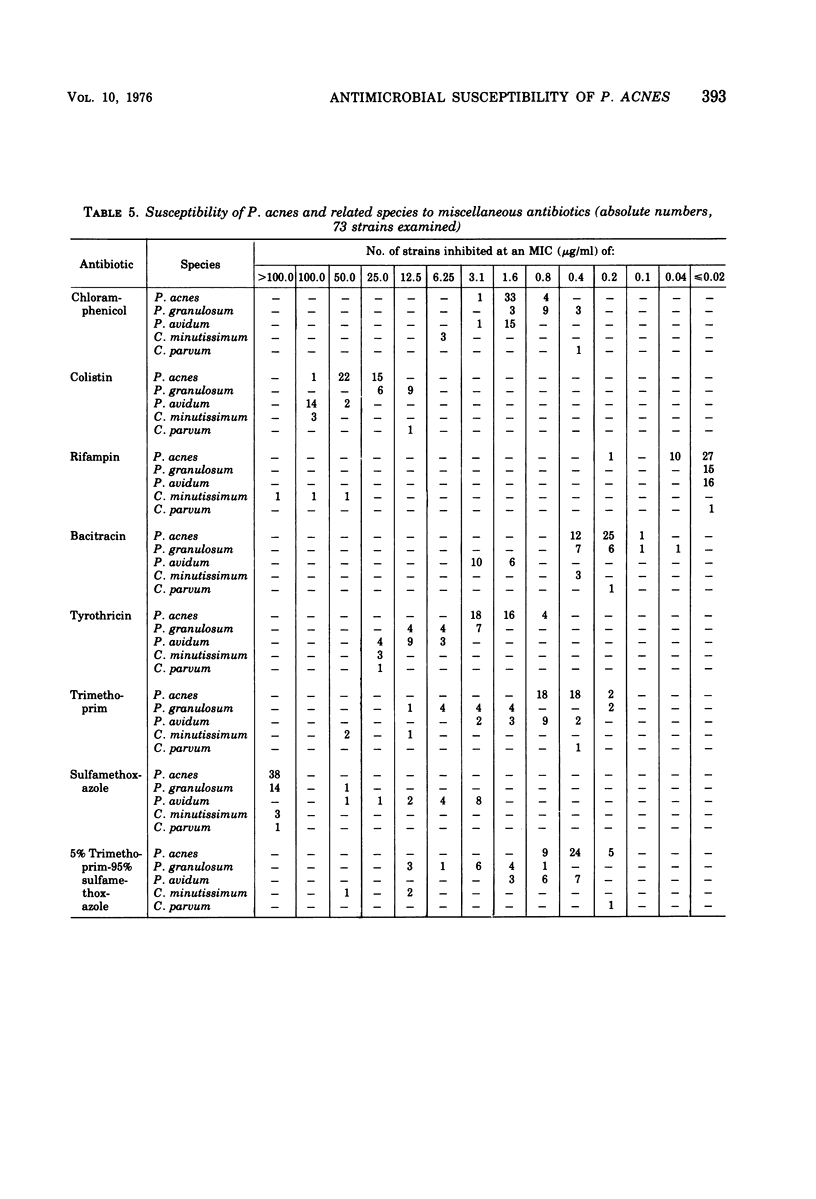
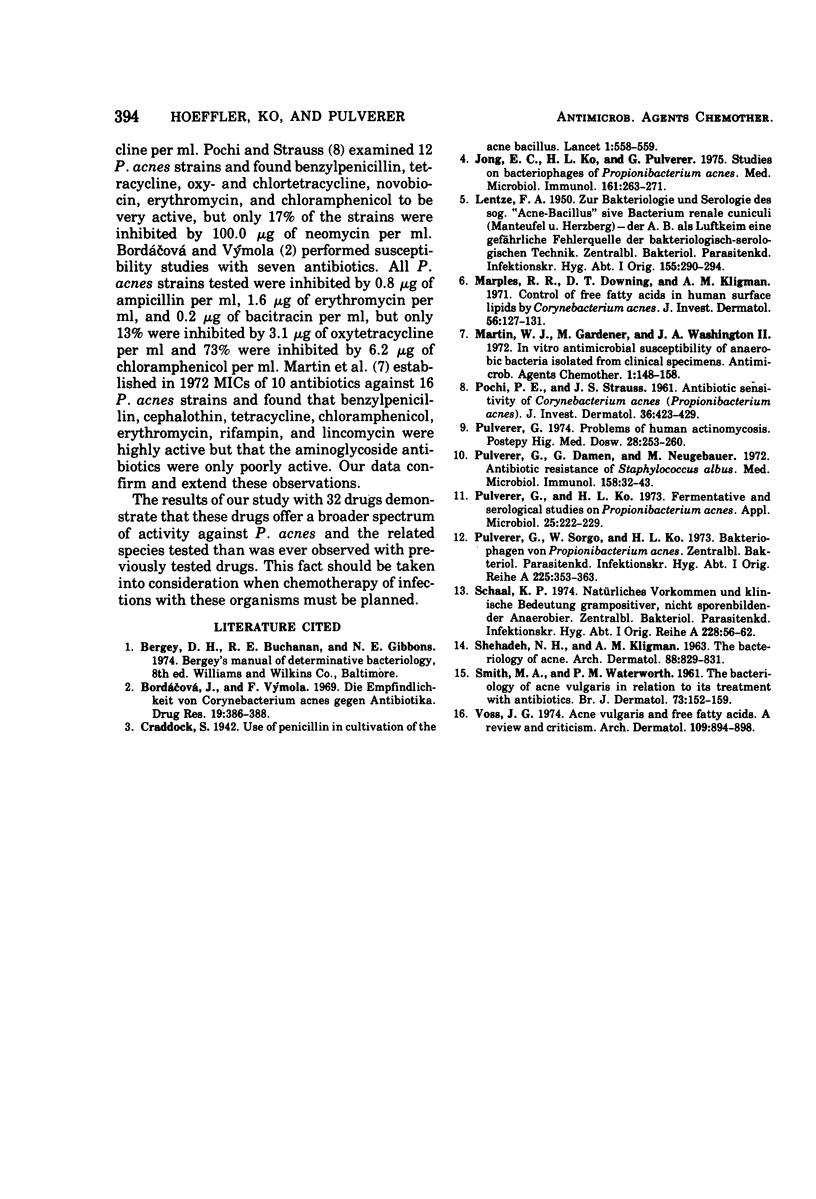
Selected References
These references are in PubMed. This may not be the complete list of references from this article.
- Bordácová J., Výmola F. Die Empfindlichkeit von Corynebacterium Acnes gegen Antibiotica. Arzneimittelforschung. 1969 Mar;19(3):386–388. [PubMed] [Google Scholar]
- Jong E. C., Ko H. L., Pulverer G. Studies on bacteriophages of Propionibacterium acnes. Med Microbiol Immunol. 1975 Sep 19;161(4):263–271. doi: 10.1007/BF02122714. [DOI] [PubMed] [Google Scholar]
- LENTZE F. A. Zur Bakteriologie und Serologie des sog. "Acne-Bacillus" sive Bacterium renale cuniculi (Manteufel u. Herzberg); der A.B. als Luftkeim eine gefährliche Fehlerquelle der bakteriologisch- serologischen Technik. Zentralbl Bakteriol Orig. 1950 May 25;155(5-7):290–294. [PubMed] [Google Scholar]
- Marples R. R., Downing D. T., Kligman A. M. Control of free fatty acids in human surface lipids by Corynebacterium acnes. J Invest Dermatol. 1971 Feb;56(2):127–131. doi: 10.1111/1523-1747.ep12260695. [DOI] [PubMed] [Google Scholar]
- Martin W. J., Gardner M., Washington J. A., 2nd In vitro antimicrobial susceptibility of anaerobic bacteria isolated from clinical specimens. Antimicrob Agents Chemother. 1972 Feb;1(2):148–158. doi: 10.1128/aac.1.2.148. [DOI] [PMC free article] [PubMed] [Google Scholar]
- POCHI P. E., STRAUSS J. S. Antibiotic sensitivity of Corynebacterium acnes (Propionibacterium acnes). J Invest Dermatol. 1961 Jun;36:423–429. doi: 10.1038/jid.1961.66. [DOI] [PubMed] [Google Scholar]
- Pulverer G., Damen G., Neugebauer M. Antibiotic resistance of Staphylococcus albus. Med Microbiol Immunol. 1972;158(1):32–43. doi: 10.1007/BF02122006. [DOI] [PubMed] [Google Scholar]
- Pulverer G., Ko H. L. Fermentative and serological studies on Propionibacterium acnes. Appl Microbiol. 1973 Feb;25(2):222–229. doi: 10.1128/am.25.2.222-229.1973. [DOI] [PMC free article] [PubMed] [Google Scholar]
- Pulverer G. Problems of human actinomycosis. Postepy Hig Med Dosw. 1974;28(3):253–260. [PubMed] [Google Scholar]
- Pulverer G., Sorgo W., Ko H. L. Bakteriophagen von Propionibacterium acnes. Zentralbl Bakteriol Orig A. 1973 Dec;225(2):353–363. [PubMed] [Google Scholar]
- SHEHADEH N. H., KLIGMAN A. M. THE BACTERIOLOGY OF ACNE. Arch Dermatol. 1963 Dec;88:829–831. doi: 10.1001/archderm.1963.01590240153025. [DOI] [PubMed] [Google Scholar]
- Schaal K. P. Natürliches Vorkommen und klinische Bedeutung grampositiver, nicht sporenbildender Anaerobier. Zentralbl Bakteriol Orig A. 1974;228(1):56–62. [PubMed] [Google Scholar]
- Voss J. G. Acne vulgaris and free fatty acids. A review and criticism. Arch Dermatol. 1974 Jun;109(6):894–898. [PubMed] [Google Scholar]


